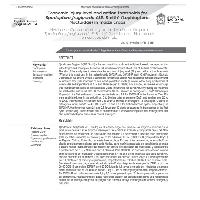Resumen
-
Spodoptera frugiperda (J.E. Smith) is the pest insect that produces the highest losses in maize production in the tropics and neotropics. Its control in Colombia comprises about 10% of the total production costs. The aim of this study was to determine the economic injury level (EIL) and define action thresholds (ATs) for this insect pest in the maize hybrids 30F35R and 30F35HR (with Cry1F protein) in Espinal, Colombia. In two sowing cycles, a completely randomized design was established for each maize hybrid to measure their yield response at four insect population levels (a control without any applications of insecticides and applications at 2, 5, and 10 larvae per 10 plants). For 30F35R, an inverse relationship was found between levels of infestation and yields; meanwhile, for 30F35HR, only during the first cycle this relationship was found. The EIL calculated for 30F35R showed an average of 2.6 and 1.9 larvae per 10 plants in the first and second cycles, respectively, and 2.8 for 30F35HR in the first cycle. Two ATs were established, one in the period from 0 to 20 days after emergence (DAE) and another from 20 to 40 DAE. The threshold for 30F35R from 0 to 20 DAE showed an average of 1.8 larvae per 10 plants in both cycles, while, from 20 to 40 DAE, it was 2.0 and 1.7 in the first and second cycles, respectively. In 30F35HR, the thresholds were 2.1 and 2.5 larvae per 10 plants on average for both periods of the first cycle, respectively. These results can be considered as a tool within integrated pest management that also includes biological and cultural control strategies.
